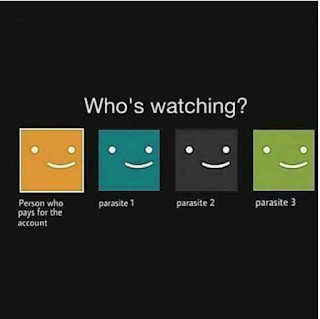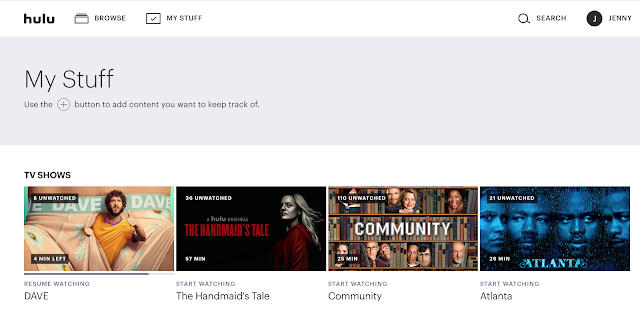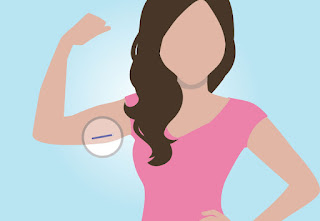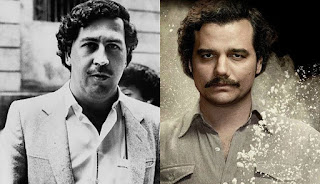My Streaming Service Story
I have been a long-time Netflix user, which makes complete sense given Netflix's early foray into streaming services in 2007. Looking back in my Yahoo Mail email threads, I discovered that I made my first Netflix account in 2012. That summer between 8th grade and high school hit the sweet spot of zero responsibilities, so I binged six seasons of How I Met Your Mother in a single week. It was only a trial, but I remember feeling cool that I finally experienced what everyone was chatting about. I did another one in 2014. And my final trial in 2015 to binge Daredevil Season 1. Back then, Netflix would invite you to return after you canceled your trial for a long time.
Though I primarily use Netflix now, my introduction to video on demand was actually through Hulu, which was publicly released in 2008. I watched Glee on Hulu for free in the summer of 2010 as an adolescent first discovering non-tween programming (I used to watch all the big Disney Channel and Nickelodeon shows: iCarly, Victorious, Good Luck Charlie, Wizards of Waverly Place, you name it). Growing up and developing more of an eclectic taste in shows and movies, I continued to pirate content. The practice was easy, everyone was doing it, and more often than not, the quality matched my standards. Of course, I would have loved to have no ads and guaranteed streaming quality. One Christmas Eve, a childhood friend gratuitously let me share her account on which I watched a bit of House of Cards. She changed her password after a few months, most likely because the basic plan only allows for one device used at a time. Fast forward to fall 2018, when my roommate gave me the account information for her boyfriend's brother's account. Mention of the chain gave my other friends a good chuckle every time. For a year and a half, it was amazing. It really helped me get through a challenging time working abroad in China, and I got to stay atop of popular shows, such as You and, well, The Office. However, just when the COVID-19 pandemic-caused quarantine was about to start, he changed the password!
Look, I get it. I know my place, and I know what they would call me in society. This is why Netflix has the # of devices rule and various pricing plans. Personalized recommendations courtesy of their recommendation algorithm, the ability to download content offline in the app, progress tracking, a list function to save to-watch movies and TV shows, an arsenal of quality content, and the overwhelming tendency to binge are all good reasons to get my own account. Alas, I have a dear friend who is currently sharing his account with me, so maybe another time. He and I actually bonded over our near identical taste in movies and TV shows. So far, during this quarantine, I have watched Narcos, Narcos: Mexico, Money Heist, Ozark, 13th and currently, Breaking Bad (no Tiger King here, people). I also want to finish House of Cards, You, Mindhunter, Sherlock, and Orange is the New Black.
All this to say, no doubt Netflix holds a special place in my heart. From references in popular culture to mainstream content on the platform to crowd-pleasing original movies and series, Netflix has cemented its place in the cultural fabric of our society. My love of entertainment even led me to build a platform that recommends an optimal streaming service to the user and returns information on movies and TV shows, including how to legally watch it, whether through a streaming platform or rental option, for a final project my senior year at NYU Stern. To be sure, the competition is fierce, with Hulu, HBO Max, Disney+, Peacock, Amazon Prime Video, Showtime, Youtube Premium, and Apple TV, just to name a few.
This will be an ongoing post comparing my different user experiences (UX) across the streaming services that I use. Spotify Student Premium gives me Hulu (w/ ads) and Showtime for free, and I borrowed my friend's HBO Max account to watch Westworld. I already have Amazon Prime Video with my parents' Prime membership. I would most likely get Disney+ in the near future, but obviously, I still have a lot of other shows to get through.
The ads on Hulu frustrate me to no end. In part, it's the fact that there are sometimes 3-4 ads to watch for each break (their durations decrease in the order they appear, i.e. 90 sec, 60 sec, 30 sec, 15 sec) and that there are almost the same number of breaks on a 22 min Hulu episode as a 45 min CW episode. Additionally, sometimes when I've already watched the ads for one break but just want to rewind the episode because I think I missed something, I am forced to watch the ads again.
When I was watching Brooklyn Nine a few months ago, I realized that every week I returned to the Hulu homepage, it took me a while to find the show. This is how the homepage is laid out [6/12/2020]:
Top navigation menu:
Browse | My Stuff
First row:
TV For You Collection
Crossing Swords - Season 1 Streaming | Ramy - Trending Today | The Office (U.K.) - Golden Globes Winner
Second row:
Movies For You Collection
The Mandela Effect - Late-Night Favorite | If Beale Street Could Talk - Trending This Week | Booksmart - Golden Globes Nominee
Third row:
Black Stories (I acknowledge that this is completely understandable given the climate we're living in now)
Fourth row:
Keep Watching
Fifth row:
Unwatched In My Stuff
Unwatched In My Stuff
Not only does this setup make it more troublesome for me to watch what I actually came to watch, but even when I sometimes resort to going to the "My Stuff" page first, the "Unwatched" and "Resume Watching" labels are not conspicuous.
Compare this to Netflix and HBO Max.
I used to dislike the Netflix homepage, because I sometimes had trouble finding the specific episode I wanted to watch. It was buried deep and took several clicks to find what I was looking for. You were better off starting the show from the beginning and perpetually pressing the "Continue Watching" button. Yes, Netflix, I am still watching.
In 2015, Netflix reconfigured its layout. You could view at a glance much more content. The links in the top navigation bar are similar to Hulu's but more minimalist. Taking up most of the residence on the homepage is a featured Netflix series or movie. The row below is "Previews" and the row right after is "Continue Watching for <name>". If I had eye or mouse-tracking software, I could measure how quickly it takes me to find the show I was watching, but I personally never feel a delay in getting there. The first click on the thumbnail gives you more information, and you remain on the same page. From there, you can watch trailers and clips, view the seasons and episodes, and even get recommendations based on the selected movie or TV show. The new interface was made to appear more like an in-app experience. Here are screen recorded videos and a more detailed explanation of the redesign.
Now that Netflix released the Netflix Party extension, my friend mentioned that Hulu should do the same. When we shared screen over Facebook Messenger to watch The Handmaid's Tale together, there were moments where the video lagged. However, I think having too many Chrome extensions to download can become tiresome fast. It would be a much more seamless user experience to have a single browser extension in which one can log into all of his/her streaming services and interchangeably join or create streaming parties. Another way may be to embed the shared screening experience within the platform. For example, if I watch to watch Avatar: The Last Airbender with a friend, I could just invite the email or username associated with her account or share a room code with her. This would be similar to how online video games and chat rooms allow friends, or even strangers, to have a shared experience.
HBO Max has a simpler homepage, taking into account my issue with Hulu. Under the top navigation bar, which consists of the search function and a collapsed sidebar, is a seemingly random set of featured movies and shows. Right below that is the "Continue Watching" section and then the "My List" section! I'm impressed by the upfront access to what I want to watch. Everything underneath, however, is a bit disorganized, with inconsistent formatting and categorization all over the place.
My final gripe with HBO Max is the continuous buffering. At 3 am, I would not expect the video to buffer every 1-2 minutes, but perhaps I should take it with a grain of salt that many people's sleeping schedules have been disrupted as a result of the quarantine. HBO Max prioritizes quality of the video, whereas Netflix had announced in March that it would reduce its streaming speeds "in order to keep the bandwidth pipelines flowing to all who need online access during the crisis" while still "ensuring a good quality service for our members" in reporting done by James Hibberd for Entertainment Weekly. The Netflix model works better, because it satisfies the binge-crazy viewers. In my experience with HBO Max, I nearly gave up on watching the show.
As for the other streaming platforms, it's highly unlikely that I will subscribe to them anytime soon. Peacock, the new one created by NBC, possesses a content library chock full of reality shows, talk shows, news and pop culture, and dramas, which don't appeal to me at all. Plus, I would pay for two other contenders--Disney+ and HBO Max--much earlier than I would for Peacock. I haven't watched Amazon Prime Video in a long time, primarily because very few of the non-originals offer free streaming for all the episodes. Sometimes, I would be hit with options to buy or rent. When I tried to watch Y tu mama tambien for a class, I had to do an IFC Films Unlimited trial. Lastly, I did not discuss Showtime, because it's rarely discussed among various media platforms and does not have a lot of content. And don't get me started on Quibi.
Conclusion: Netflix is the current market leader, and it may stay that way for a long time. It has invested billions of dollars in its content, churning out masterpiece after masterpiece, and culminated loads of data and user research to come up with the effective redesign. The Netflix Party extension is yet another sign that the company remains innovative, giving many of us cause to hold onto our subscriptions.
It's also useful to compare the hours of content on these platforms. Of course, this doesn't reflect the type of content, nor the price and value to the customer.











Comments
Post a Comment